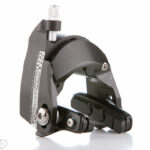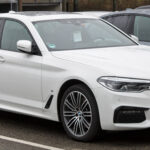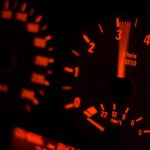Does Car Consume Fuel when Idling (Explained)
Idling refers to a vehicle running its engine while it is not in motion.
As a city commuter, I am well aware of the challenges that idling offers when it comes to fuel consumption. That’s why it is important to reduce idling as much as possible.
Here, I will discuss how much idling can cost you in fuel and how to minimize idling during your drives.
Does Car Consume Fuel in Neutral?
A car will consume less fuel while in neutral. However, the fuel savings may be minimal compared to simply keeping the vehicle in drive while idle.
So what is neutral on a vehicle anyway? In a manual vehicle, neutral is used to buffer the engine when you are switching gears. In automatic vehicles, neutral is rarely used.
The one issue with keeping the vehicle in neutral is that you have less control of the car while on the road. Therefore, it is recommended that you do not keep the vehicle in neutral to simply save on fuel.
How Much Fuel Does Car Consume Idling?
A car can consume up to ½ gallon of fuel for every hour in idle. In fact, keeping your car in idle for two minutes is the equivalent to driving one mile on the road. Idling just a few minutes a week can cost you at the gas pump.
For instance, let’s say that your vehicle is idle, on average, 15 minutes per day. In seven days, that 105 minutes of idling. That can burn over ¾ gallon of fuel. That is about $3 a week.
Over the course of a year, ilding can cost you $12 a month or $144 per year!
Read it: Should You Press Clutch While Braking (Easily Explained)
Why does Car Consume Fuel Idling?
A car consumes fuel while idling because the engine is running and it still requires fuel in order to continue its operation.
Because of the continued operation of the vehicle while in idle, it is recommended that you minimize the time that the vehicle is in idle with the engine running.
Keeping the engine idle wastes fuel, causes environmental damage and causes wear on the engine.
Does a Car in Idle Consume Less Fuel When It’s Stopped?
A car in idle can consume less fuel when it is stopped. In fact, you burn more fuel by keeping the engine in idle than you would by turning off and turning on the engine again.
Also, do you know how much money can your AC consume when driving? Learn more in this article.
Should You Stop Driving in Idle?
You should stop driving in idle because you are wasting fuel while the vehicle’s engine is on. Also, you can allow more pollutants into the air while your vehicle is in idle.
Finally, you should stop driving in idle mode because you can easily restart the engine on modern cars. Constantly restarting the vehicle’s engine will not have long term adverse to the vehicle’s starter.
Trending Video: How to Easily Bring Back to Life any Old Car Battery and Save Tons of Money (click to watch)
When You Should Really Keep Your Car in Idle?
The only time you should idle your vehicle is when you believe that the vehicle will be stopped for less than 10 seconds. During this time, it may not be necessary to go through the process of turning off the engine and turning it back on again.
Read it: Is 4×4 Worth it? It’s Great, but…
How to Avoid Idling?
You can avoid idling your vehicle by following the four following proven tips:
- Turn off your ignition if you are expecting to be idle for more than 10 seconds – If you expect to be idling for a while, then you can go ahead and turn off the engine. This will allow you to save fuel.
- Warm up your engine by driving the vehicle – You don’t need to warm up your car by making it sit idle in your driveway. Simply turn the ignition and drive to warm it up.
- Warm up the cabin of the vehicle while driving the vehicle – Also, you can warm the cabin of your vehicle by simply driving the vehicle. Idling the vehicle while turning on the heater does not make the cabin any warmer, any quicker.
- Get into the habit of restating your vehicle – Modern engines are not adversely affected by frequent restarts of the engine. Therefore, get into the habit of restarting the engine often.
Are you wondering if automatic cars consume less fuel? Check it out in this post!
When Should You Turn off Your Vehicle’s Engine?
It is recommended that you stop driving in idle when you expect your vehicle to be stopped for more than ten seconds. Here are some situations when you should consider turning off the vehicle’s engine.
- When waiting at a long light – Some lights can last up to two minutes. Therefore, you can save on fuel by simply turning off the engine.
- When waiting for someone – If you are waiting for someone, then you should turn off the engine.
- When stopped in traffic – If you are stopped in traffic for any period of time, then you should turn off the engine.
By turning off the engine, you can add to the overall range of your vehicle. This, in turn, can help you save some serious money at the gas pump.
If fuel prices begin to rise, you will want to consider turning off your vehicle’s engine more and more often.
You should also read 5 Costly Reasons to not Run a Car on Low Fuel
How to Drive to Consume as Little Fuel as Possible
You can drive to consume as little fuel as possible by turning off the engine when you are stopped for more than 10 seconds. Also, be sure to avoid stop and go traffic. When possible, use the left lane of a road or use the highways.
You can also consume as little fuel as possible by avoiding unnecessary acceleration. For instance, you don’t need to peel off from a stop light if it is not necessary.
Finally, allow your vehicle to coast if you want to save some fuel. Coasting is essentially driving your vehicle without pressing down on the gas pedal.
Simply be sure you are in a situation where you don’t have a vehicle too far ahead of you and too far behind you when coasting.
Reference:
https://scdhec.gov/sites/default/files/Library/CR-010109.pdf
https://www.pumptalk.ca/2012/07/why-using-neutral-may-not-help-save-on-fuel.html
https://www.edf.org/attention-drivers-turn-your-idling-engines






